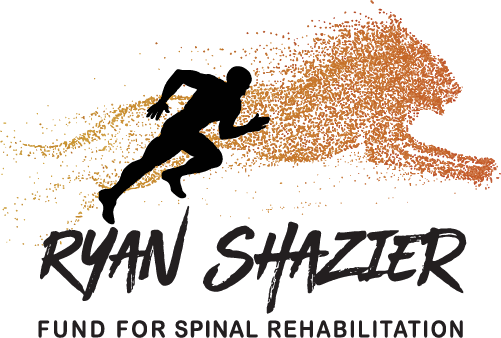by Cathy Cuff-Coffman
How a train wreck seven years ago taught a teenager to live life to his full potential.
There’s nothing like being a teenager and hopping on a train to visit your cousin–on his own.
Timothy Brodigan had done this several times, so he was no stranger to boarding a passenger train at age 16 in 2017. “It was routine for me,” says Brodigan, “I’d done it several times.”
It was his and his cousin’s winter break from high school, and both teens relished partaking in all the winter outdoor fun the middle Rockies had to offer.
So, this winter break in 2017 was the same. Young Brodigan said goodbye to his loved ones, took his seat on the train, and settled in for the several hours-long ride from Seattle to Oregon.
Not the Usual Ride
Except this time, something about the ride was “off” from the get-go. “This was a new route,” noticed Brodigan, “and a new train.” But as a teen, he didn’t give it much more thought.
However, as the train started to gather steam, Brodigan looked out his window and noticed the train was going faster than usual.
“I had taken this same train (route) multiple times,” explains Brodigan. When leaving Seattle, the passenger train usually travels at around 30 miles per hour. “This is a nice, slow speed where you can see all the familiar landmarks,” says Brodigan.
However, familiar sights were flying by as he stared out the window.
“The train’s (rail) path ran over a highway, explains Brodigan. “And by the time it got to that highway, it was kind of just cutting through everything!” he exclaims.
Derailed!
The train derailed about 45 minutes into the excursion due to excessive speed. Young Brodigan theorizes that he tumbled about the train car, HARD.
“I don’t remember too much,” he admits. “I remember getting on the train,” says Brodigan. But he states that the train accident happened so quickly that it’s natural that he has no memory, especially in light of his injuries.
“I sustained a spinal cord injury (SCI), a concussion, and multiple other injuries,” laments Brodigan.
High Cervical
His SCI was a cervical (neck) SCI injury. The train accident caused vertebrae four, five, and six (C4-6) to break, which crushed his spinal cord in the same area. (See the link to learn what the spinal cord controls each part of the body.) Brodigan also suffered from several broken ribs, a collapsed lung, and a punctured left eye.
To top that off, 16-year-old Brodigan was in a coma.
“I see fine, now,” he says with enthusiasm, “but there was a question if I would see or not because I was in a coma.”
After the train derailment, Brodigan was rushed to the closest hospital, Tacoma General Hospital in Tacoma, WA. There, the medical team worked to stabilize his neck and spinal cord.
They also addressed his broken ribs and worked to progress Brodigan out of the coma.
But while there, the Brodigans were educating themselves about the intricacies of living with an SCI and the necessary rehabilitation.
Transferring Hospitals
Brodigan contracted an illness while at Tacoma General, and because of his age, he was transferred to Seattle Children’s Hospital. However, even this hospital didn’t have the SCI-specific care Brodigan required.
Because of his coma, Brodigan couldn’t fully breathe on his own. He was assisted by a ventilator that was hooked up to him via a tracheotomy.
The ventilator didn’t stop Brodigan. “I started doing a little rehab (at Children’s), but I still couldn’t breathe on my own,” he explains. He says that because of the ventilator, he felt he wasn’t improving physically.
In addition to the ventilator, which was assisting his breathing, Brodigan had phlegm “stuck in my lungs,” he remembers. To top it off, he was wearing a cervical collar.
The Brodigans ultimately decided that Craig Hospital in Englewood, CO, could provide Tim with the best chance of recovery and leading a productive life. According to its website, Craig is one of the leading rehabilitation hospitals “that exclusively specializes in neurorehabilitation and research for individuals with spinal cord injury and brain injury.”
This single move proved more than advantageous for young Tim Brodigan. Although Craig is 20 hours away from his home in Seattle, Brodigan quickly saw the value offered to him through the many SCI-specific specialized programs provided by Craig.
The True Beginning of Healing
Brodigan likens his move to Craig as the true beginning of his SCI journey. “I have a whole lot of good things to say about Craig,” he smiles. The hospital wasted no time in making a recalcitrant teen get out of bed and start moving what he could.
“And, in two weeks, they weaned me off the ventilator and got me breathing on my own!” he exclaims. “So that was already a blessing by itself.”
Naturally, a 16-year-old boy had no idea what an SCI was or just how random and long the journey to walk–if at all–would be. But those thoughts didn’t deter him.
“I just knew all along that I was going to walk again,” he says of those days in 2017.
Brodigan continues, “I didn’t know how hard [learning to walk] would be mentally and physically.” So, he decided to focus on “little wins,” the first of which was breathing on his own. “But really, that was my first big win!” Brodigan opines that while coming off the ventilator wasn’t hard, it was scary.
“You know, there was a ‘big hole’ in my neck helping me to breathe, and when they took (the tube) out, the hole was still there!”
Lung Function A-OK
He continues, “But when they removed the vent tube, (my lungs) just started working!” He relates that it wasn’t scary, but after having a machine help you breathe for a few months, breathing on your own was a new sensation.
“But I quickly got used to it,” Brodigan chuckles.
After that first big win at Craig, Brodigan got down to work. As a cervical injury, he was paralyzed from the chest down. “I could move my arms, but that was about it,” he says.
“It really beats you up,” says Brodigan, “Especially when you were hoping to improve more than you are.”
Early in his injury Brodigan was young, a growing teenaged boy, and like most boys his age, was ready to conquer the world.
Walking Obsession
“I always wanted to walk,” he says, as if he was obsessed with the task back then. “But at first, I wasn’t able to.” Brodigan continues. “You try…you try to do it, and it just doesn’t come.”
Brodigan saw others with similar injuries improve better and faster than he did. But instead of getting jealous and dejected, young Brodigan allowed others’ success to fuel his own positive
mindset. “Oh, but that’s not to say I didn’t envy them,” he says. But he channeled that envy in a positive direction.
“I also didn’t adhere to the theory that after 18 months to two years, the window for improvement narrows and closes,” he says. “Many doctors and physical therapists told me not to expect much improvement after two years,” says Brodigan. “Here I am, seven years out [from the injury], and I’m still improving.”
Never Give Up
Much of Brodigan’s gains come from his “never give up” attitude. “Sure, I had dark days; days I wanted to coast,” admits Brodigan. But he also saw the bigger picture: he’s still a very young, healthy man with plenty of life left in him. “I think it took me like six months to be able to move my toes at first,” he notes.
“When I started moving my toes, I really felt like it was possible (to walk),” says Brodigan. “And then I was able to flex my quads and stuff like that, and then that was a little more hope.”
Brodigan owed it to himself to push through the pain and limitations of his paralysis to become the best man he could be. This process took a few years. He was 16 when he was injured; he’s 22 now.
Dedication is the Key
Brodigan has dedicated himself to spending Mondays through Saturdays in the gym.
Yet even now, Brodigan still tussles with mental gremlins. “I let my emotions out too much, “he admits. “Sometimes, I don’t even want to go to the gym. I want to quit, to give up.”
Brodigan cautions that the mental struggle is just as hard as the physical world in the SCI injury world. “But I had to learn that really quickly at a young age,” he says, “and I’m glad I paid attention and was open to mental coaching, too.”
Wheels No More!
“So, I want to tell you where I’m at right now,” he says proudly. “I don’t use a wheelchair! I use a walker all day,” Brodigan says, his voice filled with pride. “It took me five years to get to this milestone!”
Additionally, Brodigan says his personality changed once he got on his feet. “It’s me, but I felt defeated in the chair,” he admits. “But standing and walking–well, I smiled more, talked to more people…my whole outlook changed.”
Brodigan’s next goal is to transition from the walker to canes or walking sticks.
At this point, one might think Brodigan’s most significant success is his five-year quest to learn to walk again.
“No, walking is obvious–but I think, the person I am right now, mentally, is my biggest success,” says Brodigan.
His Biggest Success?
He relates that he has grown in the last few years. “I mean, mentally, every day I wake up smiling now,” he explains. “I love to give people good energy. And you wouldn’t have seen that even a year ago.”
Brodigan explains that before his “mental metamorphosis,” he was in a very dark place. “I wasn’t the biggest social person a year ago,” he confides. “I would let my negative emotions out at people who wanted to help, and I would refuse–in a rude manner.”
He says he was constantly angry at people–for no reason.
As for high school, Brodigan finished it online. His graduation was during COVID, so there wasn’t much “pomp and circumstance.”
And college? “Well, I’m not the best with the books,” he says shyly, “but I’m doing pretty well for myself.”
Brodigan did receive some settlement money from the train derailment. So far, he’s been frugal with it, although he admits he does like clothing and a nice haircut.
Real Estate Mogul
This year, Brodigan has invested some of his settlement funds in real estate, specifically a small, three-unit commercial office building.
“I can have three tenants,” he says. As the landlord, it’s up to him to maintain the building from a maintenance and safety standpoint.
He says he’s “still learning,” so if things need to be repaired, he will examine the issue and, if it’s too difficult for him, call an experienced tradesman to help.
Giving Back
And finally, to complete the circle, Brodigan has chosen to embark on a quest to help others, to provide inspiration and frank advice for people–especially those with spinal cord injuries–that there is light and joy on the other side of darkness.
At 22 years old, Timothy Brodigan has his head on straight in multiple ways.
Shalieve
Wisdom

Timothy Brodigan's Shalieve Words of Wisdom
I think the biggest thing is patience. “If I could go back and talk with my 16-year-old self, I’d tell him to ‘have patience.’ Take every little win you can. It doesn't matter what it is, even if it is taking more than one step a day, or if it's mentally getting better that day, or if it's waking up joyous that day.”
Click below to see Tim walk nine months ago, five years after the train accident that caused his spinal cord injury. (Video courtesy of FOX31 Denver)



